Three Mile Water, Brittas Bay: PURE Mile
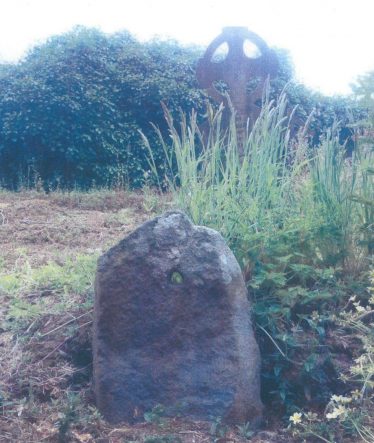
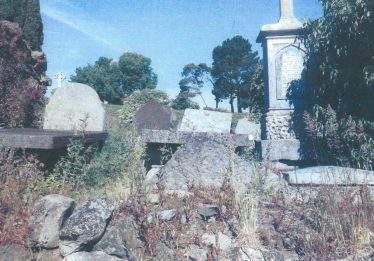




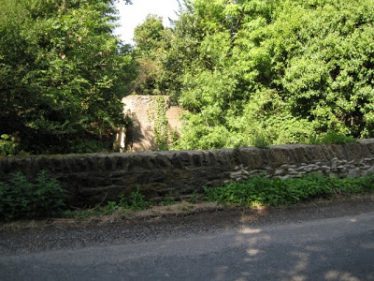

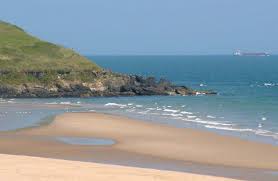



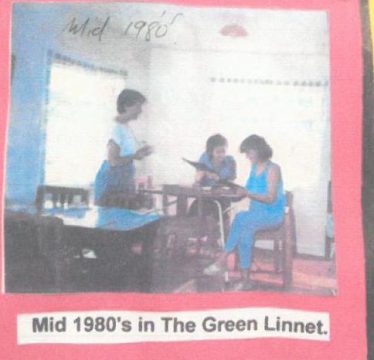
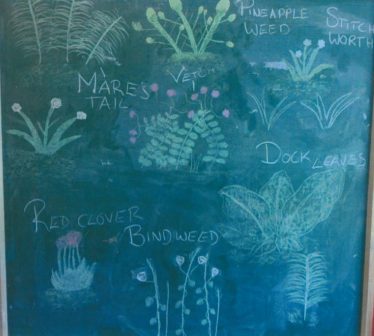


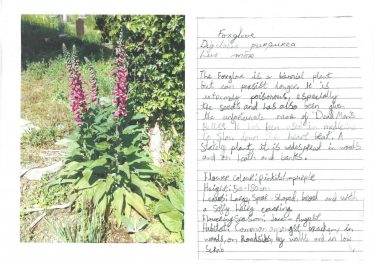



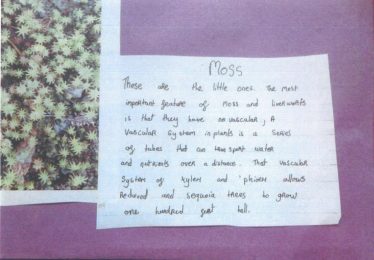



Introduction
Three Mile Water and Furzeditch were originally two local names for parts of Ennisboyne. Three Mile Water is the name given to the river here, referring to the distance from Wicklow; where the old road crossed it higher up, between Newtown Bonabrocka, it is called Two Mile Water.(Liam Price)
History and Heritage
The area of Three Mile Water and Furzeditch is of great importance in the history of Christianity in Ireland. Christianity reached the country perhaps a century before St. Patrick with the coming of Palladius.
Many maintain that Palladius landed at Three Mile Water. Legend has it he was chased out of Wicklow where he first tried to land and chose some place quieter to land the second time, that place being Three Mile Water. Palladius was followed almost immediately by Patrick who landed at a port called ‘Ostium Dee’. The Deel being the river now known as Three Mile Water. The flat sandy nature of the shore made an ideal landing ground for the flat bottomed ships of those times.
St. Baothin’s church was built on an island at the mouth of the river Deel in the early 7th century until its foundations were endangered by a great flood when it was moved to higher ground nearby.
Inisboheen means island of St. Baothin. St. Baothin lived in the 7th century. His feast day is May 22nd. It is said that Cred, the daughter of Ronan King of Leinster was the mother of Baothin. It is probable that he was born, spent his life in this district and was buried beside the church.
The remains of Sylvester and Solonius, priests in the time of Palladius are buried here too. The name Sylvester is used now in the area by many families as a Christian name.
St. Baothin was probably a pupil of Glendalough as St. Kevin had many connections with the area. Some writers assert that St. Baothin of Iona, successor to Columcille, is the patron saint of Ennisboyne.
There is strong evidence that Inisboheen monastery had a pilgrim path connecting to Glendalough. It followed along Cullen Road to Ballymoney to Ballymurrin on to Glenealy and then on to Glendalough. It has been mapped from old public rights of way and mass or funeral paths.
In discussions with archaeologists regarding the Inis Baithin monastic site, it is thought that the old Three Mile Water graveyard is the continuation of the 6th century monastery. This is confirmed in part by the boundary wall which all monasteries would have built to keep out invaders, both Viking and local tribes.
Monasteries were, apart from being places of spiritualism, places of learning and of drafting manuscripts and this would have been part of the record keeping at this time. Usually the first church would have been built of wood and monks would have lived nearby in wooden buildings. There would also have been a scriptorium on the site solely for the drafting of manuscripts. This would have been the same for Inis Baothin monastery. They would also have employed farm workers to till the land to supply the monastery and even to sell produce on. The monks were usually from noble families and would have been educated.
Also recently found in the upper part of the old graveyard is what we think is a holed stone, circa 1,500BC. It is approx 4 feet by 3 feet with a 2 inch hole carved through. This stone is being reused as a gravestone but would possibly be a Celtic ceremonial stone and may have been located elsewhere. These stones also known as ‘An cloc cosanta’ or ‘luck stone’ were thought to promote healing, fertility and second sight. Also young couples would become betroth by clasping fingers through the hole. With the coming of the Vikings it was plundered along with many other Irish monasteries.
Inisboheen is one of the few churches of this district to be mentioned in the Bull of Pope Alexandre 111 in 1179. A papal bull is a proclamation made by the Pope. It was reported in 1615 that the church was in good repair but in 1630 it was reported that the church is down due to great storms. In the taxations of 1292 and 1302-1306 it was valued at £10 yearly. Eugene O’Curry, Professor of History and Archaeology wrote in 1839 the church measures 42 feet by 19 feet and its wall 3 feet thick. Considerable portions still remain. Part of the door or window in the east gable can be easily identified. From the west gable projects a smaller apartment 16 feet by 15 ½ feet with walls 2 feet 4 inches thick. Tradition holds this place in higher esteem than any other place in East Wicklow except Glendalough. After the Reformation in the 1500s the church passed into the hands of the Church of Ireland.
In 1907 a separate building adjacent to the graveyard was consecrated as a church. This is called St. Baithins Chapel of Ease, Dunganstown Parish, Three Mile Water, Co. Wicklow.
A Chapel of Ease is a church building other than the parish church, built within the bounds of a parish for the attendance of those who cannot reach the parish church conveniently.
It is felt that the site is such an important archaeological location that it deserves a more in depth study and the school would love to be part of it.
Graveyard
As you walk through the gate you will encounter a very well kept graveyard. However, a second gate leads to a much older and clearly disused cemetery. It is on sloping ground and leads down to Three Mile River. The ruins of St. Baothin’s church are in the graveyard and within it there are many gravestones dating back to 1732. The names in this section include Wall, Olohan, Doyle, Byrne, Castler, Ellis, Murray, and Comerford. They were not all from the immediate area, some coming from Wicklow Town, Ballykippogue, Ballymoney, Ballyguile, Rathdrum, Kilcannon and Ballteskin.
In the ‘chancel’ area of the church there are tombstones for the Comerford Family. They hailed from Rathdrum. James Comerford who owned Comerford Mill in Rathdrum and who built Ardavan House is buried here along with his wife Julia Anne Ellis. Many of their kin are buried here also. They had 10 children, 6 daughters and 4 sons. One of their daughters, Helen Julia, was the first novice to be received by St. Bridget’s Convent, Rathdrum. Her religious name was Sister Mary Gertrude. Another relative Edward Comerford, was an engineer in the Kimberley Diamond Mines, South Africa and a shareholder in Rathdrum Mill. He died in 1942 and is buried in Ennisboyne. Helen Polding, a niece is also named on the headstone. She died unmarried on September 3rd 1913.
James Comerford was a close friend of Charles Stewart Parnell. His daughters were the only friends of Parnell’s daughter Anna. James Charles Comerford, a decendant along with his wife Eva Mary Esmonde are also buried in Ennisboyne. She was the daughter of Colonel Esmonde who received the Victoria Cross for bravery. Eva Mary herself was 3 times tennis champion of Ireland.
Even though she is not buried here, Máire Eva Comerford, the eldest daughter of James Charles Comerford is remembered with an inscription on the gravestone. She was a republican activist and a journalist. She took part in the 1916 Rising and worked as a journalist with The Irish Press from 1935 for approximately 30 years.
The earliest found gravestone is the Doolittle family from 1724. They were all ship owners and master mariners from Wicklow Town and they had many daughters. Most of the daughters married mariners as well, one of those being Captain Morgan from Wales who is also buried in Three Mile Water.
In 1883 the ship ‘The Elaine’ was lost with all hands on Wicklow Banks. It was assumed that the 3 bodies recovered would be interred at the cemetery at Church Hill but this was deemed to be overcrowded in the previous year 1882. It was then proposed to bury the men at Three Mile Water but as this was a Catholic graveyard the burials could not take place. Instead they were buried at Nun’s Cross Graveyard.
The old graveyard sits peacefully hidden away behind the new graveyard. Large Cyprus and yew trees give shelter. Many beautiful wild flowers cover the site which include; foxgloves, Herb Robert, and Ivy leaved toad flax.
Locations of Interest
Rockfield Hotel
Rockfield was built by Lord Seymore in the 18th century. It was later bought by people called Rutheford. The Wade family owned Rockfield House until 1912 until Sylvester Delahunt bought it and then leased it for many years.
It was later converted to a hotel which was run successfully by Colclough Byrne for a number of years. It was later leased to various people including Morgans, Killians and Kielys.
Molly Brophy, daughter of Sean Brophy who owned Ireland’s first recruitment agency married Timothy Hynes of Roscommon in 1939. She was a successful business woman and owned the ‘Molly Hynes Agency’ which still exists today. They leased Rockfield after the Kielys and continued to run it as a hotel from 1955 to 1960. Tragedy struck on July 26th 1960 when there was a terrible fire in which the chef lost his life.
It was subsequently sold to a German family called Jacquerin in 1962. They rebuilt the hotel in 1964 in the shape of the upper and lower deck of a ship facing towards sea. It consisted of 2 junior and 2 senior bowling alleys, a small air strip which ran across the cliff edge, outdoor swimming pool, 18 hole crazy golf course, a tennis court, orchard and greenhouses which provided produce for the hotel, 12 ensuite bedrooms, 12 three bed chalets. The coast guard which is now St. Michael’s House was used for the staff. The hotel closed in the early 1980s.
The Hynes family later reopened it and ran it seasonally from St. Patrick’s Day until September. It closed again until 1988 were it reopened once again under new management, Mr. Brendan Flynn until it closed in 1990. It is now a derelict site.
The Old Handball Alley
The first GAA handball alley championship was held in 1923 coinciding with the renewed interest in the game. The handball alley in Three Mile Water was built approximately this time. It was built by local labour which was consistent with the rest of the country at this time. When it was popular, large crowds used to gather to watch and match-making also took place! Other uses of the handball alley were Sunday dances, card playing, and a hiring place for labour. It is now in an abandoned state.
Three Mile Water Bridge
It was built in 1793 by Thomas Ball, a barrister. He married Grace Acton of Kilmacurragh and they lived at Seapark, Magheramore. The inscription ‘Thomas Ball 1793’ can be seen on a plaque located at a ‘stand-in’ on the bridge but it is difficult to make out due to ware. This location allows a pedestrian to move in safety when traffic is passing.
Magherabeg Beach
The sand dune system is at Ardmore Point which is 5km south From Wicklow Head. Three Mile Water River enters the sea through the dunes. The site is in good condition but some areas are being eroded by wind and sea and in some spots bedrock has been exposed. Three Mile Water River, which flows through the dunes, provides a habitat for wetland species such as sedges including the very rare Carex x Grossi sedge. It also has the rare Moore’s Horsetail which occurs in very few places in the British Isles. The beach shows dunes at all different stages i.e. dunes that are beginning to form and established older fixed dunes.
Slattery’s Shop
Patrick Slattery was a retired Birmingham policeman, originally from Co. Clare. When he was in Birmingham he met Kate Carthy of Ballymurrin, Kilbride. He built the shop in the 1930s. Maureen and Cathy were nieces of Kate and Maureen came to work in the shop when she was 14. She stayed there until she died when in her early 80s. Cathy came to work in the shop when the Slatterys died. Patrick Slattery was one of the first people in the area to have a car and the shop had the only telephone in the area for many years. Both Maureen and Cathy died in 1996.
Maureen Gallagher then bought the shop and later Joe Gill who later knocked the shop down and built the current house on the site.
The Old School
A map from 1829 shows a school where the Chapel of Ease is now standing. An inspector’s report from 1857 gives details of a Church of Ireland school being run by a young female teacher. It was described as “well managed and commodious” by the inspector.
The Green Linnet Café
It commenced trading in 1964 under the ownership of Elsie and William Hughes and opened from Easter until the end of September each year catering mostly for the tourist trade. It ceased trading in the late 1980s. It was bought from the Byrne family but it was not a café then. It was first built in 1932.
Did You Know?
- The road between Silverstrand and Three Mile Water was not built until 1967 when the Land Commission gave out the land to farming families. The road had to be built through the old Magheramore estate to connect these new farms.
- Smuggling was common along this coastline in the 1700s – goods such as brandy, wine and spices were brought in to the many hidden coves from the continent.
- A blessed stone known as the ‘stone of St. Patrick’ is said to be in the old graveyard at Three Mile Water.
- It is said that there would always be a red haired woman living in Three Mile Water.
- There used to be talk of a ghost near the back gate of Rockfield – locals would speak of ‘stange feelings’ when passing that spot!!
- There was a pound where the old Handball Alley is now. This was a small field where stray animals such as horses, cattle and donkeys would be put until they were claimed by their owners. The pound is marked on an old 1829 map.
- The old derelict house just above the bridge was always known as the ‘Laundry Hill’. This was because the family who lived there (O’Briens) did the laundry for the people in the big house at Magheramore(Ellis).
- Mrs McGeekan’s father and a few other families from Dublin bought some land at Magherabeg in the 1940s so that their families would be safer there than in Dublin during the war.
Flora
Trees along the mile include: Lime, Ash, Elm, Elder, Birch, Sycamore, Hawthorn and Poplar.
Ferns include: Bracken, Hart’s Tongue Fern, Scaly Male Fern and Maidenhair Spleenwort.
Foxgloves grow in abundance in the old cemetery, along with Rosbay Willowherb and Ivy-leaved toad flax. Yew and Cypress tress grow there also.
Some of the grasses along the roadside are: Yorkshire Fog, Tall Fescue and Cock’s Foot.
A neat hawthorn hedge runs intermittently south to north.




Comments about this page
Thanks Joe for sharing those lovely memories.
Hi all
As a child in the 1970’s we would visit three mile water for two weeks holidays. We stayed in O’Briens cottage. We had a good walk from there to the beach.
With our pocket money on a sunday we would visit slatterys shop. I will always remember the two ladies that were there. They were so nice to us and never got cross with us when we took a long time deciding what we wanted.
Happy days
Joe
Is the Hughes family still living in the area? I’m a descendant of those from there.
As I said above I am descended from the Doolittle/ Morgan and Kavanagh families all from Wicklow and I would love to find a marriage date for my Great Grandmother Margaret Doolittle who married William morgan who is actually mentioned on this page PLEASE HELP IF YOU CAN as I am at a roadblock Thanks so much Georgina Australia
Reading about Doolittles and Morgans who are my ancestors was so interesting and I would love to find out more b ut living in Australia it is hard to get information sometime but I find this site very interesting
Thank you for mentioning my home place The Green Linnet,
It brings back a lot of memories.
Add a comment about this page